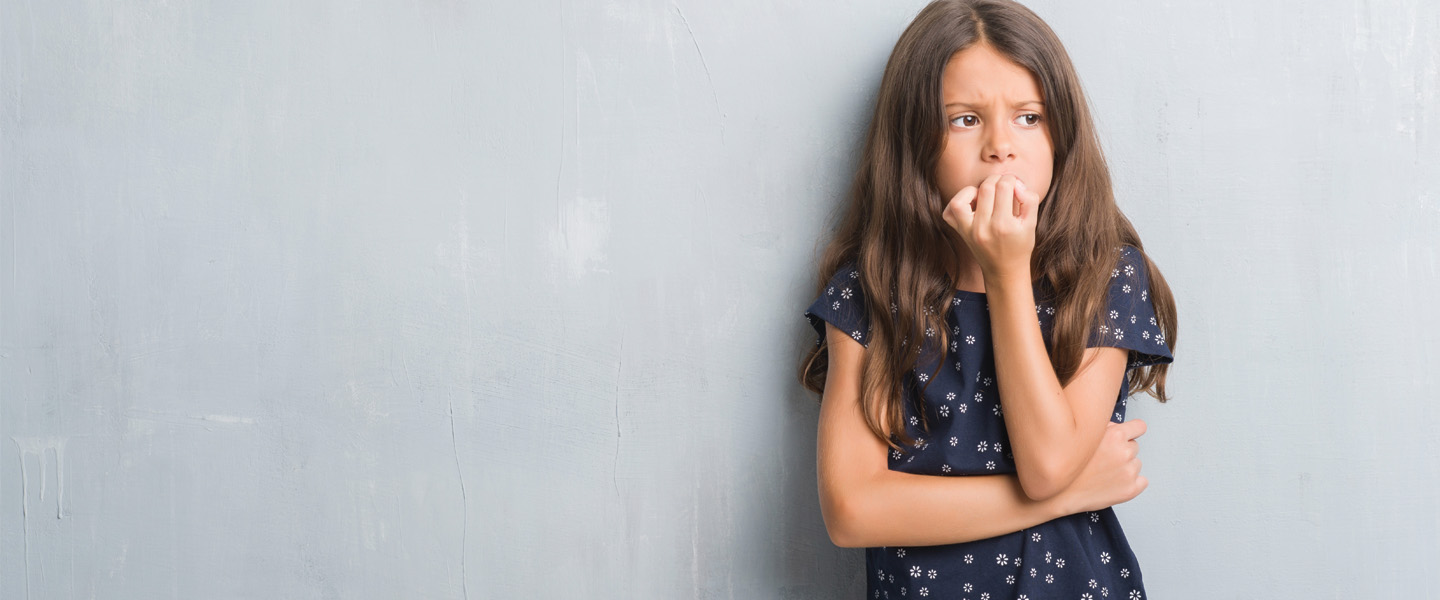In Childhood Anxiety, CBT Helps By Normalizing Hyperactive Brain Circuits, Study Finds
In Childhood Anxiety, CBT Helps By Normalizing Hyperactive Brain Circuits, Study Finds

A new study of brain network and circuit responses in young people with anxiety disorders who were treated with a course of cognitive behavioral therapy (CBT) suggests how the therapy helps to normalize some but not all irregularities that are likely involved in generating anxiety symptoms. This in turn suggests how CBT and possible adjuncts to it might be modified to improve outcomes.
CBT is a first-line treatment for pediatric anxiety disorders, which are highly prevalent and can be impairing if left untreated. The therapy usually involves graded exposures of the patient to stimuli that evoke fear. The premise behind the approach is extinction of fear through restructuring of cognitive responses to fear stimuli. The impact of such therapy, when effective, is an interruption of processes that lead the patient to avoidant behavior and thinking which makes it difficult to carry on normal activities, from schooling to play and socializing.
A research team led by Melissa A. Brotman, Ph.D., Chief of the Neuroscience and Novel Therapeutics Unit at the National Institute of Mental Health (NIMH), sought to discover treatment-related changes in regional activation patterns throughout the brain in young people with anxiety disorders after they were treated for 12 weeks with CBT plus an adjunctive treatment using computerized cognitive training.
First author of the paper reporting the team’s results was Simone P. Haller, D. Phil., a 2020 BBRF Young Investigator. Three other BBRF-affiliated researchers were members of the team, including Ned H. Kalin, M.D., of the University of Wisconsin, a BBRF Scientific Council member and editor-in-chief of the American Journal of Psychiatry, in which the team’s paper appeared.
As the team points out, neurobiological models posit that pathological anxiety “arises from dysregulated cognitive processes and defensive responses.” Alterations in functional brain networks are presumed to account for this, including circuitry involved in attention, salience (determining the relative importance of stimuli coming in from the senses), and threat perception.
While CBT is well proven to be effective in many pediatric anxiety patients, it is by no means perfect. “Response rates are variable, leaving a large portion of treated youths with significant symptoms following treatment,” the team notes. “The moderate success rate may be due, in part, to limited understanding of the mechanisms” in the brain that are therapeutically modified by CBT.
To address the paucity of research on CBT-related brain mechanisms in young people, the team studied responses in 69 young people, two-thirds female, diagnosed with primary anxiety disorders (generalized, social, separation, phobia) who received CBT plus computer-guided cognitive therapy for 12 weeks. These children, who on average were about 12-13 years old and were unmedicated, received functional MRI (fMRI) brain scans prior to beginning treatment, and then again following the full course of treatment. The scans were made while the participants were asked to perform a simple task while emotionally neutral or angry faces were displayed on a computer screen. The results in these children were compared with scans made under the same conditions for a group of 62 demographically matched healthy children. Most of the participants in the anxiety group and many in the comparison group came from families with annual incomes of $90,000 or more.
The team reported several major findings. Among these was that the unmedicated children with anxiety disorders who received CBT differed from heathy children at baseline, when the first fMRI scan was made. Prior to treatment, youths with anxiety disorders showed widespread hyperactivation of neural circuits, consistent with previous research. These treated children differed at baseline in reaction time to stimuli (slower) and in levels of activation (hyperactivated) brain-wide. Second, in children with anxiety, reaction time as well as hyperactivation specifically in the fronto-parietal region reverted to normal levels with CBT treatment. Third, a number of regions in the brain’s cortex and in subcortical regions “remained hyperactive in patients after CBT treatment.” Subcortical regions include the brain’s limbic circuitry which handles lower-order emotional processing of inputs from sensory systems and includes the amygdala.
Perhaps the most important aspect of the study was the finding that in young patients, some patterns of hyperactivation, including several frontal regions of the brain as well as the right amygdala, did not change with treatment. The team cannot be certain why this is the case, but theorized that while cognitive aspects of CBT “may first reduce subjective feelings of fear or anxiety, defensive systems may show more persistent dysfunction.” They speculate that CBT may more effectively target cortical circuits, while subcortical (including limbic) dysfunction “may lag in responsivity and/or might require more direct interventions” to alter exaggerated defensive reactions.
The team suggested that longer-term follow-up of youths who complete CBT treatment “may reveal normalization of amygdala function,” adding to the benefit the therapy may have on cortical circuitry. It is possible, they say, that youths who continue to demonstrate aberrant cortical and subcortical functioning may be especially prone to relapse as time passes. Overall, it makes sense, they suggest, to follow treated youths over time, and also to assess the effectiveness of complementary adjunctive treatments given alongside CBT, particularly those that have a direct impact on subcortical structures of the brain such as the amygdala.
In addition to Drs. Haller and Kalin, the research team included Rany Abend, Ph.D., a 2019 BBRF Young Investigator; and Katharina Kircanski, Ph.D., a 2013 BBRF Young Investigator.




